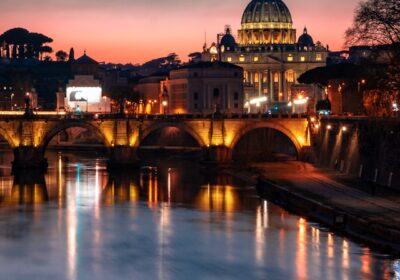India: A Tapestry of Tradition, Culture, and Natural Beauty
India, a land of diverse cultures, languages, and landscapes, offers an unparalleled travel experience. From the snow-capped peaks of the Himalayas to the golden sands of Rajasthan, and from the spiritual ghats of Varanasi to the bustling streets of Mumbai, India is a country that captivates the heart and soul of every traveler. This guide will take you through the highlights of India, showcasing its rich heritage and vibrant present.
Arrival and First Impressions
India’s major international airports, such as Indira Gandhi International Airport in Delhi and Chhatrapati Shivaji Maharaj International Airport in Mumbai, serve as primary gateways for travelers. Upon arrival, visitors are often struck by the country’s vibrant energy, the warmth of its people, and the myriad of colors and aromas that fill the air.
Delhi: The Historical and Political Heart
The Red Fort
The Red Fort, a UNESCO World Heritage site, is a stunning example of Mughal architecture. Built in the 17th century by Emperor Shah Jahan, this massive red sandstone fortress served as the main residence of the Mughal emperors. The fort’s intricate design and historical significance make it a must-visit attraction in Delhi.
Qutub Minar
Qutub Minar, another UNESCO World Heritage site, is the tallest brick minaret in the world. Standing at 73 meters, this 12th-century monument is a testament to the architectural prowess of the Delhi Sultanate. The surrounding Qutub complex, with its ancient ruins and lush gardens, adds to the charm of the visit.
India Gate
India Gate, a war memorial dedicated to the Indian soldiers who died in World War I, is an iconic landmark in the heart of New Delhi. The monument is surrounded by lush green lawns and is a popular spot for evening strolls and picnics. The Amar Jawan Jyoti, or Flame of the Immortal Soldier, burns continuously to honor the fallen soldiers.
Agra: The City of Love
The Taj Mahal
The Taj Mahal, one of the Seven Wonders of the World, is a symbol of eternal love. Built by Emperor Shah Jahan in memory of his beloved wife Mumtaz Mahal, this white marble mausoleum is a masterpiece of Mughal architecture. The intricate carvings, the reflection of the monument in the surrounding pools, and the changing hues of the marble with the light make it a mesmerizing sight.
Agra Fort
Located near the Taj Mahal, the Agra Fort is another UNESCO World Heritage site. This 16th-century fort served as the main residence of the Mughal emperors until the capital was shifted to Delhi. The fort’s red sandstone walls enclose a number of stunning palaces, mosques, and audience halls, offering a glimpse into the opulent lifestyle of the Mughals.
Jaipur: The Pink City
Hawa Mahal
Hawa Mahal, or the Palace of Winds, is one of Jaipur’s most distinctive landmarks. This five-story palace, built in 1799, features a stunning façade with 953 small windows, or jharokhas, designed to allow royal ladies to observe street festivities without being seen. The intricate latticework and the palace’s unique design make it a must-visit site in Jaipur.
Amber Fort
Amber Fort, located on a hilltop overlooking Maota Lake, is a magnificent example of Rajput architecture. The fort’s grand halls, intricate mirror work, and beautiful gardens transport visitors back to the era of Rajput royalty. An elephant ride up to the fort adds to the regal experience.
City Palace
The City Palace, a sprawling complex in the heart of Jaipur, offers a fascinating blend of Rajasthani and Mughal architecture. The palace houses a museum showcasing royal artifacts, including weapons, costumes, and paintings. The beautifully decorated gates, courtyards, and gardens add to the palace’s grandeur.
Varanasi: The Spiritual Soul
The Ghats of Varanasi
Varanasi, one of the oldest continuously inhabited cities in the world, is a major spiritual center for Hindus. The city’s ghats, or riverfront steps, are the focal point of daily life and religious rituals. The evening Ganga Aarti at Dashashwamedh Ghat, a mesmerizing ceremony involving fire, chants, and music, is a must-experience event.
Kashi Vishwanath Temple
The Kashi Vishwanath Temple, dedicated to Lord Shiva, is one of the most revered temples in India. Located in the heart of Varanasi, this temple attracts millions of devotees each year. The temple’s gold-plated spire and domes are a sight to behold, and the spiritual atmosphere offers a profound sense of peace and devotion.
Sarnath
Just a short drive from Varanasi, Sarnath is an important Buddhist pilgrimage site where Lord Buddha delivered his first sermon after attaining enlightenment. The Dhamek Stupa, Ashoka Pillar, and the Sarnath Archaeological Museum, which houses a rich collection of artifacts, make Sarnath a significant historical and spiritual destination.
Kerala: God’s Own Country
The Backwaters
The backwaters of Kerala offer a unique and tranquil experience. A houseboat cruise through the serene waters, flanked by lush green paddy fields and swaying coconut palms, provides a glimpse into the traditional lifestyle of the local communities. Alappuzha (Alleppey) and Kumarakom are popular starting points for backwater cruises.
Munnar
Munnar, a hill station in Kerala, is known for its sprawling tea plantations, mist-covered hills, and cool climate. The region’s scenic beauty, coupled with attractions like the Eravikulam National Park, Mattupetty Dam, and tea museums, make Munnar a perfect destination for nature lovers and adventure seekers.
Kovalam Beach
Kovalam Beach, located near Thiruvananthapuram, is one of the most famous beaches in India. The crescent-shaped beach, with its golden sands and azure waters, is ideal for sunbathing, swimming, and water sports. The nearby Lighthouse Beach offers stunning views of the Arabian Sea from the top of the lighthouse.
Practical Tips for Visitors
Best Time to Visit: The best time to visit India depends on the region. Generally, the winter months (October to March) offer pleasant weather across most parts of the country, making it ideal for sightseeing and outdoor activities.
Transportation: India has an extensive and efficient transportation network, including trains, flights, buses, and taxis. The Indian Railways system is a popular and scenic way to travel between cities. Domestic flights are convenient for longer distances.
Accommodation: India offers a wide range of accommodation options, from luxury hotels and heritage properties to budget-friendly hostels and guesthouses. Booking in advance is recommended, especially during peak travel seasons.
Cultural Etiquette: Indian culture places a high value on respect and politeness. Common practices include greeting with a namaste (a slight bow with hands pressed together), removing shoes before entering homes and temples, and dressing modestly, especially when visiting religious sites. Learning a few basic Hindi phrases can enhance your travel experience.
Reflection and Farewell
As my journey through India came to an end, I was left in awe of the country’s rich cultural heritage, diverse landscapes, and vibrant traditions. From the historical marvels of Delhi and Agra to the spiritual ambiance of Varanasi and the natural beauty of Kerala, India offers a diverse and unforgettable travel experience. Whether you are a history enthusiast, a nature lover, a spiritual seeker, or a culinary explorer, India promises an enriching and memorable visit.
Plan your trip to India and discover the timeless beauty and vibrant energy of this extraordinary country.






Leave feedback about this